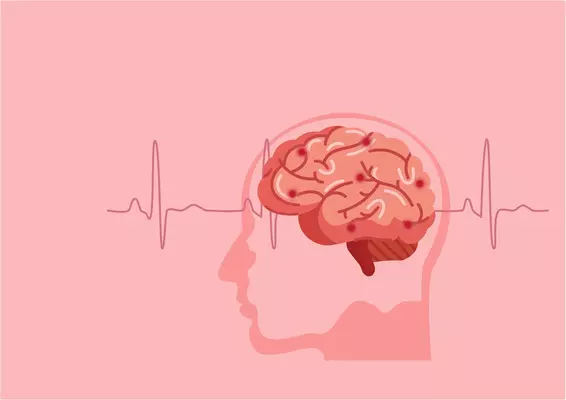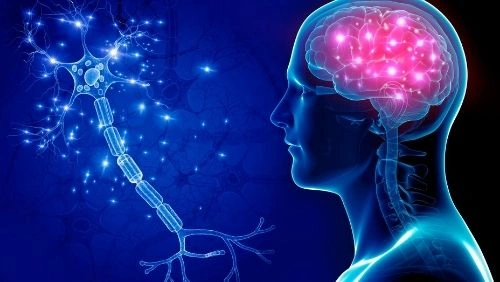Stroke genes

If you tested your DNA with a personal genomics service like 23andMe, AncestryDNA, FamilyTreeDNA, MyHeritage or another testing company, you can learn more about your risk factors for hundreds of diseases. By clicking the button above ⬆️, you can upload your raw DNA data file and receive a personalized 250-page health report with research links that is the most comprehensive.
Ischemic stroke has a multifactorial etiology, with genetic causes playing a significant role, particularly in early-onset cases. Various stroke classification systems based on genetic information have been proposed to correspond with different stroke phenotypes. While twin and family history studies, as well as candidate gene approaches, are commonly used to identify genetic causes of stroke, they have limitations. Genome-wide association studies and next generation sequencing are more efficient and increasingly used for daily diagnostics. Monogenic disorders, which account for only 7% of stroke etiology, can cause well-known clinical manifestations, including stroke. Polygenic disorders are more common, causing about 38% of all ischemic strokes, and identifying them is a rapidly developing field of modern stroke genetics. Advances in human genetics provide opportunities for personalized prevention and novel treatment possibilities. Genetic risk scores (GRS) and extended polygenic risk scores (PRS) estimate the cumulative contribution of known genetic factors to a specific stroke outcome.
Stroke caused by a blood clot that originates in the heart is known as cardioembolic stroke.
While there are several genes linked to AF recurrence, not all of them are also associated with stroke. The number of genes connecting AF and stroke that have been identified is limited. Two genes, PITX2 and ZFHX3, located in chromosomes 4q25 and 16q22, have been identified as significant risk factors for AF and CE stroke. Studies have shown that SNPs in PITX2 and ZFHX3 genes increase the risk of CE stroke by 36% and 25%, respectively. These genes have been repeatedly confirmed as significant risk factors for stroke, and two additional genes, ZNF566 and PDZK1IP1, have been added to the archive of stroke genes significantly associated with CES.
Stroke affecting a major artery.
Regarding the subtype of large artery stroke (LAS), there are notable discoveries. The primary variation within the 7p21 chromosome, situated near the HDAC9 gene, is linked to a 39% rise in LAS strokes. The exact mechanism of stroke risk remains unclear, but some hypotheses suggest atherosclerosis acceleration and changes in brain ischemic responses [53]. Another gene associated with LAS is CDKN2A/CDKN2B, located at 9p21, which increases the risk of ischemic stroke by 15%. Additionally, MMP12, which encodes matrix metalloproteinases and is part of the MMP genes cluster on chromosome 11, is a crucial gene for LAS. Interestingly, this gene is overexpressed in carotid plaques. The NINDS SiGN (National Institute of Neurological Disorders and Stroke Genetics Network) researchers identified a SNP at 1p13.2 near TSPAN2 that was linked to an increased LAS risk. Meanwhile, the TSPAN2 gene itself is associated with migraine and retinal vasculopathy with cerebral leukoencephalopathy and systemic manifestations.
Disease of small vessels
Genetic risk factors can trigger two subtypes of lacunar stroke: isolated lacunar stroke and multiple lacunar stroke with leucoaraiosis. Several studies have identified distinct genetic mechanisms that elevate the risk of lacunar strokes, including impaired oxidative phosphorylation pathways and various single nucleotide polymorphisms. Some of these polymorphisms are situated in genes associated with Alzheimer's disease and intracerebral hemorrhage [52].
The CHARGE Consortium has reported that a locus near the FOXF2 gene on chromosome 6p25 has reached genome-wide significance for all stroke subtypes and white matter hyperintensity (WMH) burden. Additionally, a single nucleotide polymorphism within the 16q24.2 locus has been found to be associated with small-vessel stroke and WMH, but not with an increased risk of intracerebral hemorrhage. The locus appears to act through changes to regulatory elements, as evidenced by its associations with the expression of ZCCHC14 and DNA methylation. Furthermore, the SH2B3 gene at a 12q24 locus, originally linked to all ischemic stroke but not to any specific subtype, exceeded genome-wide significance in the meta-analysis of small artery stroke.
Near the FOXF2 (6p25) and ALDH2 (12q24) genes, variants linked to all types of strokes were discovered [56,63]. Additionally, a potential connection to various stroke subtypes exists at the 12p13 chromosome locus near the NINJ2 gene.
Follow the link of the selected polymorphism to read a brief description of how the selected polymorphism affects Stroke and see a list of existing studies.
SNP polymorphisms related to the topic Stroke:
| rs6797312 | Twice the risk of stroke is higher in Caucasian women. |
| rs505922 | There is a 1.2-fold increased risk of pancreatic cancer. |
| rs6025 | The rs6025(A) allele encodes a mutation known as the Leiden mutation, R506Q, an 11.4-fold increased risk of venous thromboembolism. |
| rs599839 | The rs599839 polymorphism on chromosome 1p13.3 is associated with premature coronary heart disease. |
| rs556621 | The rs556621 variant on chromosome 6p21.1 is associated with large artery atherosclerotic stroke and ischaemic stroke. |
| rs2200733 | The rs2200733 variant on chromosome 4q25 is associated with risk of atrial fibrillation and ischaemic stroke. |
| rs10455872 | The rs10455872(G) allele of the LPA gene is associated with high levels of lipoprotein and elevated calcium in the aortic valve, coronary artery disease and coronary heart disease. |
| rs2230500 | SNP 1425G/A in PRKCH is associated with ischaemic stroke and cerebral haemorrhage. |
| rs11833579 | NINJ2 promoter polymorphism predicts risk of large artery atherosclerotic stroke. |
| rs12425791 | NINJ2 promoter polymorphism causes association with ischaemic stroke. |
| rs11984041 | HDAC9 variant associated with large vessel ischaemic stroke contributes to carotid atherosclerosis. |
| rs2107595 | HDAC9 Rs2107595 variant alters susceptibility to coronary heart disease and severity of coronary atherosclerosis. |
| rs1800801 | Gla rs1800801 matrix protein polymorphism is associated with ischaemic stroke recurrence. |
| rs12204590 | Genetic risk factor for ischaemic and haemorrhagic stroke. |
| rs879324 | Genetic risk factor for ischaemic and haemorrhagic stroke. |
| rs6843082 | Genetic risk factor for ischaemic and haemorrhagic stroke. |
| rs2084898 | |
| rs1401296 | |
| rs1364044 | |
| rs469568 | |
| rs12413409 | |
| rs173686 | |
| rs161802 | |
| rs3783799 | |
| rs74475935 | |
| rs635634 | |
| rs12438353 | |
| rs2219939 | |
| rs899997 | |
| rs783396 | |
| rs4471613 | |
| rs10744777 | |
| rs34311906 | |
| rs9351814 | |
| rs880315 | |
| rs42039 | |
| rs1333047 | |
| rs10757272 | |
| rs9899375 | |
| rs7859727 | |
| rs7283054 | |
| rs12936587 | |
| rs17612742 | |
| rs6841581 | |
| rs6842241 | |
| rs1937787 | |
| rs6825454 | |
| rs10400694 | |
| rs4959130 | |
| rs1333040 | |
| rs4932370 | |
| rs28688791 | |
| rs2383207 | |
| rs7771564 | |
| rs1804689 | |
| rs5752326 | |
| rs1333049 | |
| rs11681884 | |
| rs2229383 | |
| rs7156510 | |
| rs1564060 | |
| rs768606 | |
| rs12476527 | |
| rs10820405 | |
| rs2822388 | |
| rs11957829 | |
| rs12291066 | |
| rs2005108 | |
| rs34166160 | |
| rs4867766 | |
| rs6891174 | |
| rs7304841 | |
| rs2634071 | |
| rs2634074 | |
| rs13143308 | |
| rs6817105 | |
| rs1052053 | |
| rs2984613 | |
| rs4714955 | |
| rs11867415 | |
| rs704341 | |
| rs12449964 | |
| rs146390073 | |
| rs248812 | |
| rs2295786 | |
| rs72794386 | |
| rs16896398 | |
| rs16851055 | |
| rs8103309 | |
| rs1122608 | |
| rs781542 | |
| rs7705819 | |
| rs13407662 | |
| rs35436 | |
| rs13168506 | |
| rs7610618 | |
| rs2084637 | |
| rs9345396 | |
| rs12124533 | |
| rs12122341 | |
| rs17771318 | |
| rs7582720 | |
| rs12037987 | |
| rs12445022 | |
| rs7193343 | |
| rs12932445 | |
| rs72184 | |
| rs10507391 | |
| rs12190287 | |
| rs11556924 | |
| rs17114036 | |
| rs5443 | |
| rs2238151 | |
| rs579459 | |
| rs11672433 | |
| rs4076317 | |
| rs225132 | |
| rs7937106 | |
| rs1842681 | |
| rs2236406 | |
| rs13299556 | |
| rs114947355 | |
| rs142655108 | |
| rs115670077 | |
| rs72976591 | |
| rs184221467 | |
| rs138134155 | |
| rs77460585 | |
| rs114527838 | |
| rs6967981 | |
| rs112455974 | |
| rs565295967 | |
| rs140164788 | |
| rs115825287 | |
| rs192977447 | |
| rs55931441 | |
| rs113949028 | |
| rs181095590 | |
| rs73923591 | |
| rs12646447 | |
| rs4792143 | |
About The Author
Li DaliLi Dali, a National Foundation for Outstanding Youth Fund recipient, is a researcher at the School of Life Sciences in East China Normal University. He earned his PhD in genetics from Hunan Normal University in 2007 and conducted collaborative research at Texas A&M University during his doctoral studies. Li Dali and his team have optimized and innovated gene editing technology, leading to the establishment of a world-class system for constructing gene editing disease models.


